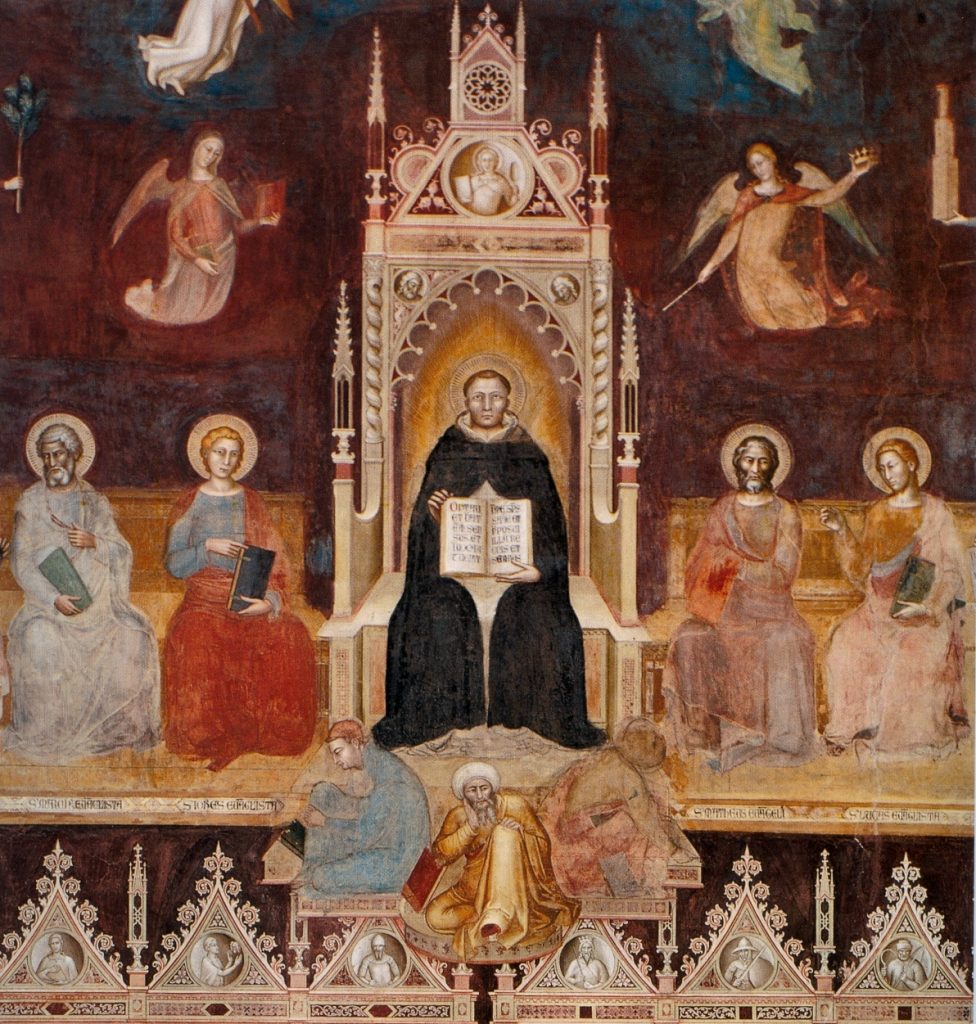St. Thomas Aquinas was born in 1225, to a noble family with relatives who ruled the Holy Roman Empire. His father, Randolph, was the Count of Aquino, and his mother Theodora was the Countess of Teano. It is said that his mother was told by a hermit, before Thomas was born, that one day her son would enter the Dominican Order, and “so great will be his learning and sanctity that in his day no one will be found to equal him.”
When he was five years old, Thomas was sent to study at Monte Cassino, the abbey founded by St. Benedict. Thomas’ great intelligence impressed the monks who taught him, and at their suggestion, he went to the University of Naples at age 10. There he learned philosophy, and worked hard to maintain his faith and values among the corruption of the students around him.
As a young man, Thomas made friends with a holy Dominican, and was inspired to join their order. Despite his mother’s encounter with the hermit, his family had no plans for Thomas to live as a poor, celibate preacher, and so his brothers kidnapped him and brought him home. At one point, they sent a woman to seduce him, but Thomas drove her out.
When the pope and the Holy Roman Emperor pressured Thomas’ family to return him, he was allowed to escape. Thomas received the pope’s blessing on his vocation, and then went to Paris to study under St. Albert the Great.
Because Thomas was a very quiet student, he was nicknamed “the Dumb Ox” by his fellow students. St. Albert said that Thomas would “give such a bellow in learning as will be heard all over the world,” despite his nickname.
At 23, Thomas was teaching at the University of Cologne. In 1248, he published commentaries on the Greek philosopher Aristotle, using his insights on nature, logic, and metaphysics to form Thomas’ own approach to theology.
After Thomas was ordained as a priest, he became known for his reverence for the liturgy and for his homilies. He succeeded in bringing many of his family members to sincerely practice the faith, and began working on his writings on theology.
Even today, Thomas’ works are well-known and widely used, including the Summa Contra Gentiles, the Compendium Theologiae, and the Summa Theologica. The Summa Theologica was placed on the altar along with the Bible during the 16th century Council of Trent, so that members could reference it quickly.
In December of 1273, Thomas had a mystical experience that he claimed showed him things “that make my writings look like straw.” He determined he could no longer write, but agreed to attend the Council of Lyon and help reunite the Greek and Latin Churches. On his travels, he stopped at a Cistercian abbey to recover from illness, and dictated to the monks a commentary on the Old Testament Song of Songs.
Thomas didn’t live to finish his final theological work. He made his last confession and asked to receive the Eucharist one last time. Before it, he said, “I adore you, my God and my Redeemer… for whose honor I have studied, labored, preached, and taught.”
His last words were recorded as spiritual council to one of the Cistercian monks. “Be assured that he who shall always walk faithfully in God’s presence, always ready to give him an account of all his actions, shall never be separated from him by consenting to sin.”
St. Thomas Aquinas died on March 7, 1274. He was canonized in 1323 and named a Doctor of the Church in 1568.

